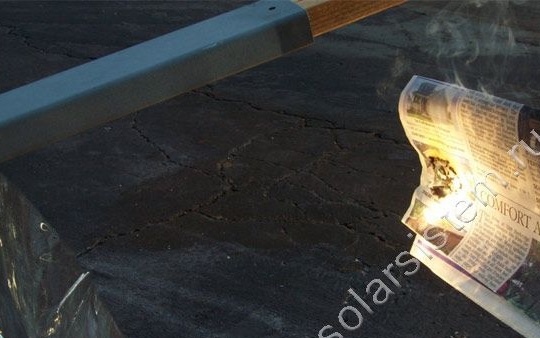Such a solar oven works very simply. When the sun's rays hit the plate, they are reflected from it and then focused at one point. As a result of this, the temperature rises sharply at this point, the principle is very similar to the operation of the lens.
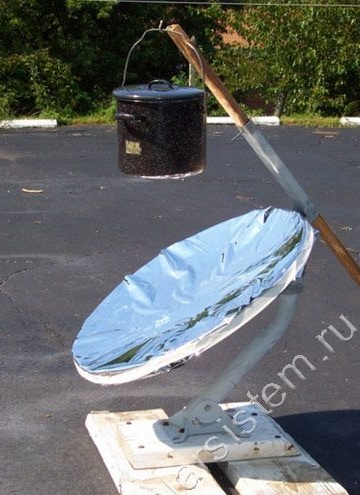
Materials and tools for manufacturing:
- parabolic satellite dish;
- a board or bar to create a solid foundation;
- saw for metal;
- wooden plank;
- mirror film;
- glue;
- scissors and other tools.
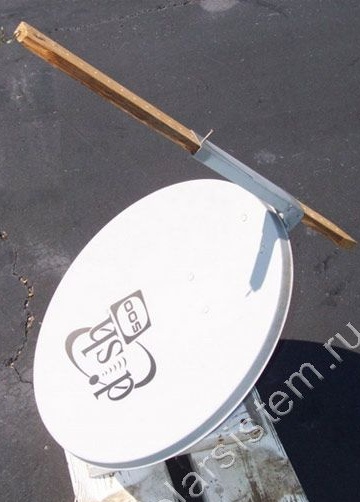
The process of manufacturing a solar furnace:
Step one. We make a platform for the furnace
So that the oven can reliably stand on the ground and at the same time hold the pot, for it you need to make a good support. A board is suitable for these purposes, but it is better to use a beam, since it is heavier. The platform needs to be made as wide as possible, then the furnace will be more stable and will not tip over even with a strong gust of wind. It is necessary to cut off two pieces of the board and then screw the antenna to it with screws, as indicated in the photo.
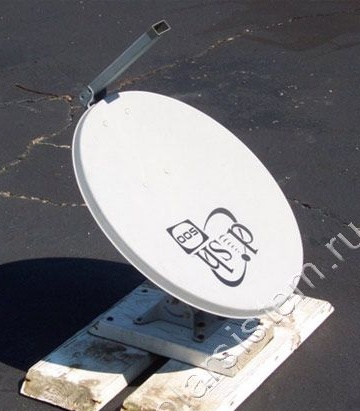
Step Two Extend the gander
The thing is that the plate is designed to focus the waves in the region of the LNB heads, that is, this is too small a distance for focusing the rays on the bowler. In this regard, the gander needs to be lengthened a little. For these purposes, a wooden block is used. It needs to be sharpened at one end, and then driven into the antenna pipe. At the end of the gander, you need to hammer the hook, a bowler will be hung on it. Instead of a hook on the gander, you can make cuts into which the handle of the pot will simply be inserted. Thus, the distance to the bowler from the antenna sheet can be adjusted if necessary.


Step Three Create a reflective surface
In order for the sun's rays to beat off the antenna, its surface must be made mirrored. For these purposes, you can use foil, mirror film or small pieces of mirror.It is important to understand here that the efficiency of the furnace will directly depend on the quality of the materials used. The better the material will reflect the sun's rays, the higher the temperature at the focused point.
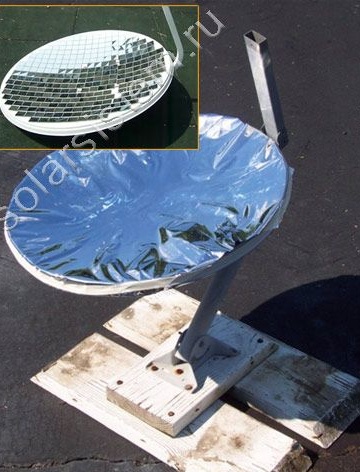
Step Four Final assembly and inspection of the furnace
Now the oven can be assembled and tested in practice. It must be turned to the sun so that the focused rays fall directly on the bowler. You may need to experiment with the distance from the antenna sheet to the bowler. The better the beam is focused, the higher the temperature.
There are several tricks to improve the efficiency of such a furnace. Firstly, the bowler must be black, because if it reflects the sunlight, the efficiency of such a device will be low. Secondly, the kettle can be placed in a heat-resistant bag, as a result, the greenhouse effect will form in the bag and the efficiency of the furnace will increase significantly.

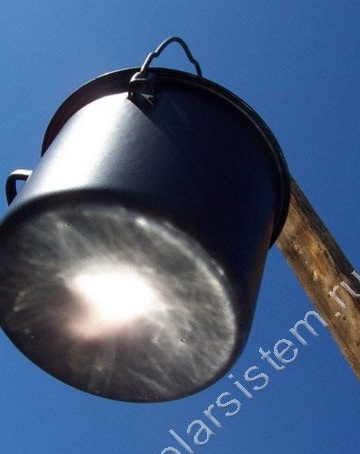
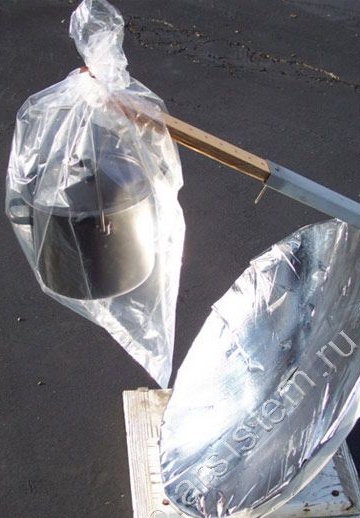
The disadvantage of such a furnace is that it needs to be turned every half hour for the sun. In addition, there is a risk of getting a burn if you accidentally fall under the influence of focused sunlight. It is very dangerous to get such a source of energy in the eyes.
According to the author, at the focus point, the temperature reaches several hundred degrees. For example, a stove easily ignites a wooden block, and this requires about 300 degrees. In the photo you can see how the newspaper caught fire from a beam of light, and all this after 15 seconds, although the temperature in the street was only +18 degrees.
You need to work with such stoves in sunglasses, as there is a risk of burning the cornea of the eye due to glare.
